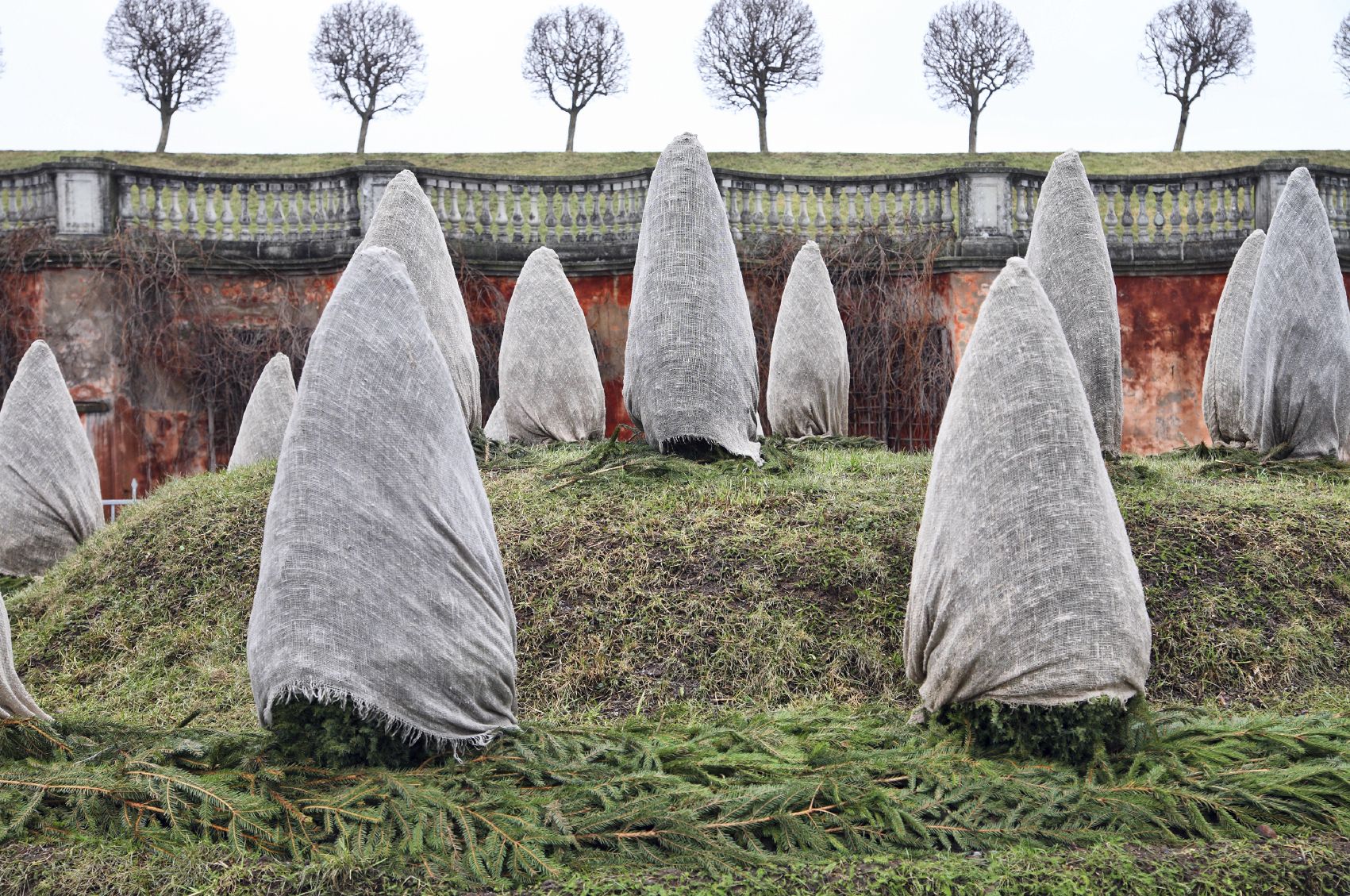- June 6, 2024
- Posted by: wellcoindustries
- Categories: Burlap, Erosion Control
Winter can be harsh on plants, especially those that are not native to colder climates. Wrapping plants in burlap is an effective way to protect them from frost, snow, and strong winds. Here’s a step-by-step guide on how to wrap your plants in burlap for winter to ensure they survive and thrive when spring arrives.

Why Use Burlap?
Burlap is an ideal material for protecting plants because it is breathable, allowing air circulation while still providing a barrier against the cold. It also helps prevent moisture buildup, which can lead to rot and disease.
Materials Needed
- Burlap sheets or rolls
- Twine or garden string
- Stakes (optional)
- Scissors or a utility knife
Step-by-Step Guide
1. Choose the Right Time
Wrap your plants in burlap before the first hard frost. This is usually late fall or early winter, depending on your climate zone.
2. Prepare the Plant
Remove any dead or diseased foliage from the plant. Water the plant well, as hydrated plants are better able to withstand cold temperatures.
3. Measure and Cut Burlap
Measure the height and width of your plant to determine how much burlap you will need. Cut the burlap accordingly, ensuring you have enough to wrap around the entire plant and secure it.
4. Wrap the Plant
Gently wrap the burlap around the plant. Start at the base and work your way up, ensuring the burlap is snug but not too tight, as this can damage the plant. If you have a larger plant, you may need to use multiple pieces of burlap.
5. Secure the Burlap
Once the plant is wrapped, secure the burlap with twine or garden string. Tie it at various points to keep the burlap in place. If you live in an area with strong winds, you might also consider using stakes to anchor the burlap to the ground.
6. Check Regularly
Throughout the winter, periodically check the burlap to ensure it remains secure. Re-adjust and re-tie as necessary, especially after storms or heavy snowfalls.
Tips for Different Types of Plants
- Shrubs and Small Trees: For larger shrubs and small trees, create a burlap tent. Use stakes to create a frame around the plant, then drape the burlap over the frame and secure it.
- Perennials and Smaller Plants: For smaller plants, simply wrap the burlap around the plant and secure it with twine. Ensure the entire plant is covered, including the base.
Additional Considerations
- Mulching: Before wrapping, add a layer of mulch around the base of the plant. This will help insulate the roots and retain moisture.
- Avoid Plastic: Never use plastic to cover plants as it can trap moisture and cause the plant to overheat during sunny winter days.
Conclusion
Wrapping your plants in burlap for the winter is a simple yet effective way to protect them from harsh weather conditions. By following these steps, you can ensure your plants stay healthy and are ready to thrive when the warmer weather returns. Remember to choose the right time, prepare your materials, and check the coverings regularly to provide the best care for your plants.
